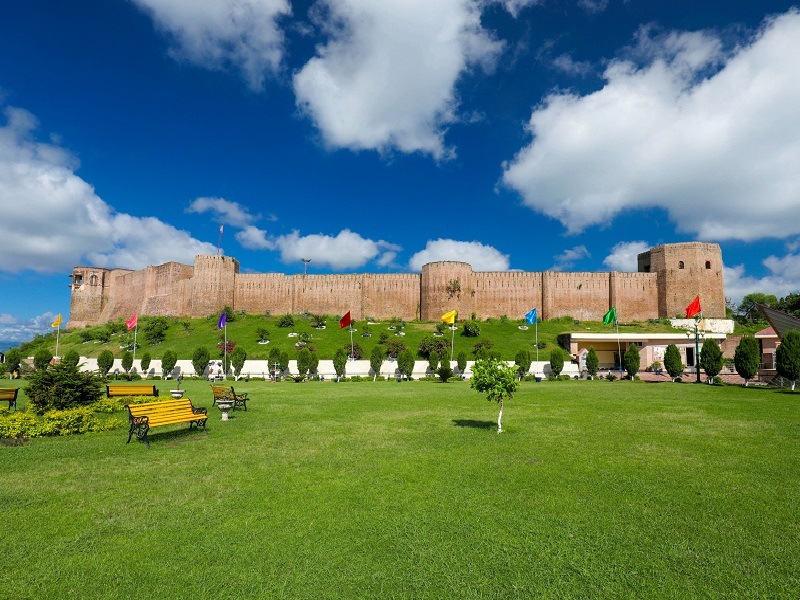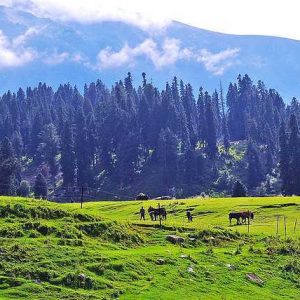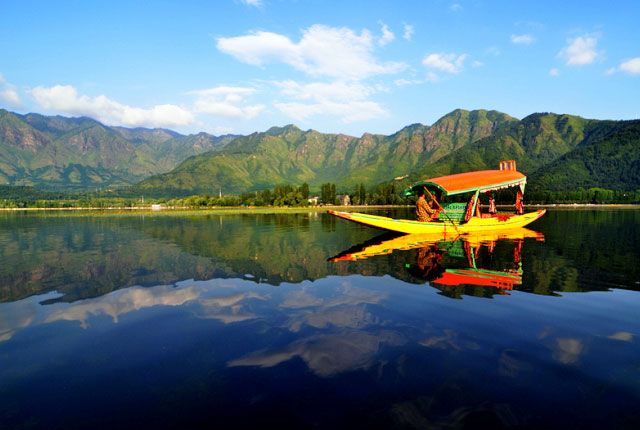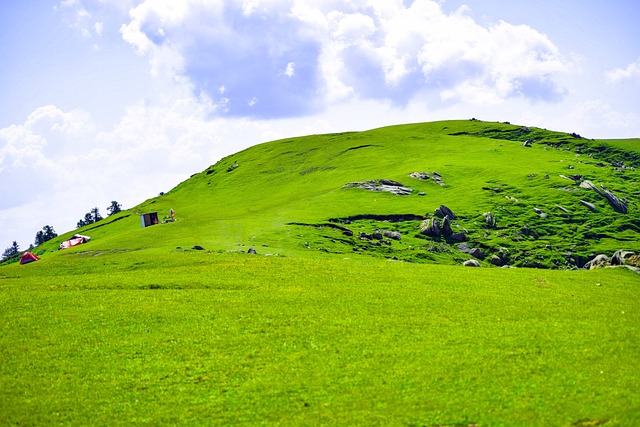
Famous Tourist Places in Jammu
Table of Contents
ToggleOverview
Situated at the foot of the breathtaking Himalayas, Jammu is India’s most magical city, providing an unpretentious mix of spirituality, heritage, and nature. As the winter capital of the Union Territory of Jammu & Kashmir, the city has a variety of places to visit in Jammu which are sure to attract any type of tourist. Whether you’re on the lookout for placid lakes, ancient temples, or rolling hill tops, Jammu tourism has in store an experience that will find space within your mind much beyond your return from the destination. In this complete Jammu travel guide, we lead you through the top places to visit in Jammu, complemented by useful travel advice, recommended itineraries, and local food that make Jammu tourism a journey worth taking.





A Glance into Jammu's Heritage
Before going through Jammu’s top attractions, it is necessary to understand the cultural and historical landscape of the city. Jammu has a past dating back over 3,000 years, with Hindu, Sikh, and Muslim rulers having made their presence felt in the city. Stories are told of Raja Jambulochan, the city being named for whom it is said to be, and the ancient temples of Raghunath and Ranbireshwar, which reflect the religious history of Jammu. All this cultural mix has transformed Jammu tourism into a multi-dimensional pilgrimage of religion, architecture, and colourful indigenous traditions.
1. Vaishno Devi Temple: The Spiritual Peak
Maybe the biggest tourist spot of Jammu, the Vaishno Devi Temple attracts a huge number of pilgrims from all over the world annually. At a height of 5,200 feet in the Trikuta Hills, the temple is for Goddess Vaishno Devi, a highly respected Hindu goddess.
Yatra Experience: The 13-kilometer journey from Katra to the cave shrine is a 6–8 hours round-trip trek, sliding across dense forests, boulder-covered trails, and religious fervor. Helicopter rides are also an option for a quicker ascent.
Key Highlights: The narrow Mandir cave, the Bhawan complex, and the holy water sources (Papnashini and Manjapuri) are where it’s at.
Insider Tip: Start your pilgrimage early one morning to avoid the afternoon crowds and see the sunrise views over wooded ridges.
This sacred walk puts Jammu as a major destination for Indian religious tourism, and Vaishno Devi temple pilgrimages are the highlight of any Jammu travel itinerary.
2. Raghunath Temple: An Architectural Wonder
Raghunath Temple, a group of seven shrines for Lord Rama and his values, is at the center of the city of Jammu. The temple, built in the 19th century by Maharaja Ranbir Singh, is adorned with intricate stone carvings and gold-plated spires.
Architectural Delights: The doorway of each shrine is festooned with elaborate frescoes, pillar-carvings, and silver doors, with the sanctum sanctorum containing a powerful 5-foot-tall idol of Lord Rama.
Cultural Attraction: Ram Navami and Diwali festivals are colorful events on the temple campus, and it thus becomes a center of attraction for cultural experience in your Jammu travel itinerary.
Adding Raghunath Temple to your list of places to visit in Jammu assures you to experience the city’s religious beauty and historical richness in one visit.
3. Bahu Fort and Bagh-e-Bahu: Where History Meets Serenity
Standing atop a hill overlooking the Tawi River, Bahu Fort is Jammu’s oldest fort, dating as far as 300 BCE. Commissioned originally by Raja Bahulochan, the fort complex now serves as military barracks, a temple, and a lush terraced garden referred to as Bagh-e-Bahu.
Fort Discovery: Walk along ramparts, gateways, and watchtowers of the past and see how the fort held a commanding position during Dogra times.
Garden Retreat: The perfectly maintained Bagh-e-Bahu has landscaped gardens, flower beds in every hue, and shaded pavilions—a great place for a peaceful picnic or sunset shoot.
Best Time: Visit in the late afternoon to get the golden sun across the river valley and sample local snacks from vendors close to the garden entrance.
This combination of Bahu Fort and Bagh-e-Bahu is why tourists list these among Jammu’s top-ranking sights for history enthusiasts and nature enthusiasts alike.
4. Amar Mahal Museum: A Royal Heritage Showcase
Close to the Bahu Fort is the Amar Mahal Museum, former home of Maharaja Amar Singh and now museum and art gallery. Its European flavour, with Corinthian columns and gigantic dome, is an impressive anomaly amidst the otherwise conventional buildings of Jammu.
Exhibitions to Visit: A unique portrait of Maharaja Hari Singh, Gold Throne of Maharaja Hari Singh, and a thought-provoking collection of paintings, manuscripts, and ancient clocks.
Opening Hours: Open from Tuesday to Sunday, 10:00 AM to 6:00 PM. Minor entrance fees make it an inviting cultural place on your travel list for Jammu.
Amar Mahal Museum contributes to your travel guide for Jammu with information about the art and lifestyle of the Dogra dynasty.
5. Mansar Lake: Peaceful Natural Scenic Beauty
Located around 60 kilometers from the city of Jammu, Mansar Lake is a calm body of water bordered by hilly forests and old temples. A Ramsar Wetland of International Importance, Mansar provides boating, bird-watching, and forest trekking.
Boating & Picnics: Go for a paddle on the serene waters or unwind on the lakefront with some local cuisine such as mutton curry and kaladi (native cheese).
Temples nearby: Explore the Jagannath Temple and Laxmi Narayan Temple on the lake shore for some spirituality and beauty.
Wildlife Encounter: Bhimgarh Wildlife Sanctuary, nearby, houses leopards, deer, and migratory birds, adding a flavor to your nature-based Jammu tour.
Including Mansar Lake on your Jammu tour package provides a relaxing respite from city forts and temples.
6. Patnitop: Hill Station Paradise
Patnitop, 2,024 meters above sea level, is a picturesque hill station with aerial views, adventure sports, and green meadows.
Adventure Activities: Paragliding, trekking to Nag Temple, and horse riding in the Shankh Pal meadow.
Winter Wonderland: In December, January, and February, snowfall makes Patnitop a skiing resort, hence an excellent Jammu winter tourist destination.
Accommodation: From charming cottages to luxury resorts, Patnitop caters to budgets and hence is an ideal part of your Jammu sightseeing tour.
For adventure seekers looking for pleasant climates and adrenaline-rush activities, Patnitop is one of the places to visit in Jammu.
7. Ranbireshwar Temple: The Shivaratri Spectacle
Under the patronage of Lord Shiva, the Ranbireshwar Temple is famous for housing a humongous 20-foot-tall Shiva Lingam, adorned by 12 tiny Shivalingas.
Architectural Splendor: The open courtyard and CP stone floor exhibit exquisite symmetry, and the towering dome of the temple adds to its grandeur.
Festival Highlight: During Maha Shivaratri, festive vibes fill the temple compound with thousands of devotees, vibrant processions, and evening prayer sessions—making it a Jammu religious tourism superstar.
Adding Ranbireshwar Temple to your Jammu travel guide guarantees an out-of-this-world spiritual experience.
8. Shiv Khori: Cave Shrine of Mystique
Around 70 kilometers from Jammu lies Shiv Khori, a rather ancient cave temple that has a Shivalinga naturally situated inside. The 100-foot-long stalactite-filled cave with subdued lighting guarantees an out-of-the-world experience.
Pilgrim Path: The 3-kilometer forest path takes you to the cave entrance, giving your places to visit in Jammu a dash of adventure.
Visitor Experience: Prepare for a serene environment, bereft of business troubles, with sole concentration on the spiritual ambiance of Lord Shiva.
Shiv Khori’s mystical grandeur places it amongst Jammu’s off-the-beaten-path tourist spots for visitors and pilgrims alike.
9. Peer Kho Cave Temple: Secret Spiritual Retreat
Hidden close to the Tawi River, Peer Kho Cave Temple is a serene place both Hindus and Muslims revere. The cave temple has a natural Shivlinga and a tiny mosque chamber representing communal peace.
Secluded Serenity: In contrast to the more crowded pilgrim centers, Peer Kho provides a serene refuge in nature’s beauty.
Local Legend: A hermit saint is revered with the sanctity of the cave in legend, making it a fascinating addition to your Jammu tourist travel.
Tour to Peer Kho gives depth to your Jammu tourist travel, opening the syncretic paths of the city.
10. Baglihar Dam: Engineering Marvel
Located on the Chenab River, Baglihar Dam is as breathtaking an engineering marvel as it is an unexpectedly scenic location. Blue water of the reservoir against undulating backdrops of hills is a sight to behold.
Sightseeing & Photography: The walkway in the dam provides level-by-level photography, and the hills around provide vantage points for panoramic photography.
Sustainable Power: Discover the part played by the hydroelectric power of the dam to enrich the region, and how Jammu’s mix of nature and development.
Having Baglihar Dam as part of your site visits for Jammu highlights the diversity of other places other than temples and hill stations.
Local Culture and Cuisine: A Gastronomic Experience
No travel book to Jammu is ever complete without a taste of local food. Restaurants and roadside dhabas provide a mouthwatering mixture of dishes:
- Kaladi Kulcha: Classic cheese stuffed within bread leavened, best served with hot chutney.
- Rajma with Rice: Jammu Rajma is richer and creamier and is usually served with rice steamed-cooked.
- Mutton Rogan Josh: Spicy curry adapted from Kashmiri cuisine.
- Kofta Curry: Meat or vegetable dumplings swimming in hot gravy.
- Street Delights: From piping hot samosas to jalebis, Jammu street food is a pleasure for all the senses.
Relishing the local food gives your Jammu travel adventure an edge, with a taste of the local fare.
Best Time to Visit
- Spring & Summer (March–June): Relatively pleasant weather (15°C–30°C) allows sightseeing and hill station excursions without any hardship. Best time for Jammu sightseeing and Patnitop and Mansar Lake outdoor activity.
- Monsoon (July–Sept): Heavy rains could cause travel discomfort; landslides will become the norm in hilly tracts. Road journey not recommended.
- Autumn & Winter (Oct–Feb): Clear blue sky and cool air (5°C–20°C) make it ideal to visit temples and fort complexes. Patnitop’s winter sports start from December, attracting adventure-seekers.
How to Reach Jammu
- By Air: Jammu Airport (Satwari) has connecting flights to major Indian cities like Delhi, Mumbai, and Srinagar. Taxis and buses are available easily to the city center.
- By Train: Jammu Tawi Railway Station is a big railway station with direct trains from Delhi, Kolkata, and other city metros.
- By Road: Well-connected national highways connect Jammu with Delhi (NH44) and Chandigarh. Regular operations are run by private and government-owned buses.
Inclusion of these travel tips for Jammu will provide easy connectivity to your travel plan.
Suggested Itineraries
2-Day Tour of Jammu
Day 1: Morning day trip to Raghunath Temple and Ranbireshwar Temple; afternoon tour of Bahu Fort and Bagh-e-Bahu; evening walk in local bazaars.
Day 2: Early morning trip to Katra for Vaishno Devi Yatra; back to Jammu by night.
3-Day Jammu & Around
Day 1: Temple and fort excursion of Jammu city; dinner at a rooftop restaurant in a heritage hotel.
Day 2: Day outing to Katra and Vaishno Devi; night stay at Katra.
Day 3: Mansar Lake sightseeing and visit to Amar Mahal Museum; drive back through scenic roads.
Travel Tips and Safety
- Permits: No special permits are needed for Jammu city or Katra. Carry identification.
- Health: Drink plenty of water during treks; keep basic medications ready for altitude or motion sickness.
- Dress Code: Dress modestly, especially when visiting temples and shrines.
- Local Etiquette: Remove shoes before entering religious sites; obtain permission before photographing locals.
Conclusion
From the spiritually inflected trails of the Vaishno Devi yatra to Bagh-e-Bahu’s verdant gardens, Jammu is a tapestry of experiences that engage heart and soul. Whether you’re a pilgrim, history enthusiast, or nature lover, Jammu tourism unfolds countless opportunities to explore, reflect, and enjoy. By following this detailed Jammu travel guide, you’re well-equipped to plan an unforgettable journey through one of India’s most diverse and vibrant destinations. Pack your bags, immerse yourself in the warm hospitality, and embark on a mesmerizing adventure exploring the famous tourist places in Jammu.
How to book Kashmir tour?
Contact a travel agency that specializes in Kashmir tours. You can reach out to the following for assistance:
- Phone:
- +91 7889 655596
- +91 7006 891267
- Email:
Inquire about tour packages, itineraries, and pricing, and confirm your booking for a memorable winter experience!
People Also Ask
What is the best time to visit Jammu for sightseeing?
The best time to visit Jammu is from March to June and October to early December, when the weather is pleasant for temple tours, hill station excursions, and the Vaishno Devi trek.
How do I reach Vaishno Devi from Jammu?
To reach Vaishno Devi from Jammu, take a train or flight to Jammu Tawi, then a 50 km drive to Katra. From Katra, begin the 13 km pilgrimage trek or opt for a helicopter service.
Is online booking available for the Vaishno Devi yatra?
Yes, pilgrims can book Vaishno Devi yatra tickets and helicopter services online through the official Shrine Board website to avoid long queues.
What are the top temples to visit in Jammu city?
The must-visit temples in Jammu include Raghunath Temple, Ranbireshwar Temple, and Peer Kho Cave Temple, each offering unique architecture and spiritual ambiance.
How much time is needed to explore Bahu Fort and Bagh-e-Bahu?
Allocate at least 2–3 hours to walk the ramparts of Bahu Fort, visit the small temple inside, and relax in the terraced gardens of Bagh-e-Bahu.
Are there any wildlife sanctuaries near Jammu?
Yes, the Bhimgarh Wildlife Sanctuary near Mansar Lake is home to leopards, deer, and migratory birds—ideal for nature lovers exploring Jammu tourism.
What adventure activities are available in Patnitop?
In Patnitop, visitors can enjoy paragliding, trekking, horse riding, and, during winter months, skiing—making it one of the top Jammu hill station experiences.
Can I cover Jammu’s major attractions in a 2-day trip?
Yes, a well-planned 2-day Jammu itinerary can include Raghunath Temple, Bahu Fort, and an overnight trip to Katra for the Vaishno Devi yatra.
What is the entry fee for Amar Mahal Museum?
The entry fee for Amar Mahal Museum is nominal (around ₹20–₹30 per person), with discounts for students and senior citizens.
Is photography allowed inside the Ranbireshwar Temple?
Photography is generally restricted inside the sanctum, but you can capture the temple’s exterior architecture and courtyard.
How far is Mansar Lake from Jammu city?
Mansar Lake is approximately 60 km from Jammu city, reachable by car or local bus in about 2 hours.
What local dishes should I try in Jammu?
Don’t miss kaladi kulcha, Jammu-style rajma with rice, mutton rogan josh, and street treats like samosas and jalebis for an authentic Jammu food experience.
Are there budget accommodations near Raghunath Bazaar?
Yes, several clean and affordable guesthouses and budget hotels are located within walking distance of Raghunath Bazaar and the temple complex.
Do I need a permit to visit Patnitop?
No special permit is required for Patnitop, but carry a valid ID for check-in at hotels or resorts.
What shopping can I do in Jammu city?
Shop for Pashmina shawls, hand-embroidered textiles, wood carvings, and papier-mâché souvenirs at Raghunath Bazaar and the markets near Bahu Fort.
Is public transport available between Jammu and Katra?
Yes, regular state-run and private buses, as well as taxis, operate between Jammu city and Katra throughout the day.
How crowded is the Vaishno Devi trek during peak season?
During Navratri and peak summer months, the Vaishno Devi trek can be very crowded; plan early-morning starts or off-season visits to avoid large pilgrim groups.
What should I pack for a Jammu hill station trip?
Pack warm layers, sturdy trekking shoes, sunscreen, and rain gear (during monsoon) when visiting hill stations like Patnitop and Sanasar.
Are there guided tours available for Jammu sightseeing?
Yes, numerous local tour operators offer guided day tours of Jammu’s temples, forts, and nearby attractions, often including transport and entry fees.
Can children join the Vaishno Devi pilgrimage?
Children can undertake the Vaishno Devi trek, but it’s recommended for those over 6 years old; consider using palanquins or ponies for younger kids.
What is the significance of Shiv Khori cave shrine?
Shiv Khori is a sacred cave temple housing a naturally formed Shiva Lingam, attracting devotees and adventure seekers on a 3 km forest trail.
How safe is solo female travel in Jammu?
Jammu is generally considered safe for solo female travelers, especially in well-populated tourist areas; following basic precautions ensures a worry-free trip.
Are there any night markets in Jammu?
While there are no formal night markets, many street food stalls and shops near Raghunath Bazaar stay open into the evening, offering snacks and souvenirs.
What travel apps work best for navigating Jammu?
Use Google Maps for driving routes, the IRCTC app for train bookings, and local taxi apps (e.g., Jugnoo) for easy intra-city travel in Jammu.
How do I include Patnitop and Mansar Lake in a single trip?
On a 3-day Jammu itinerary, dedicate one day to Patnitop’s hill station activities and the next to Mansar Lake’s boating and wildlife sanctuary, returning to Jammu city each evening.




